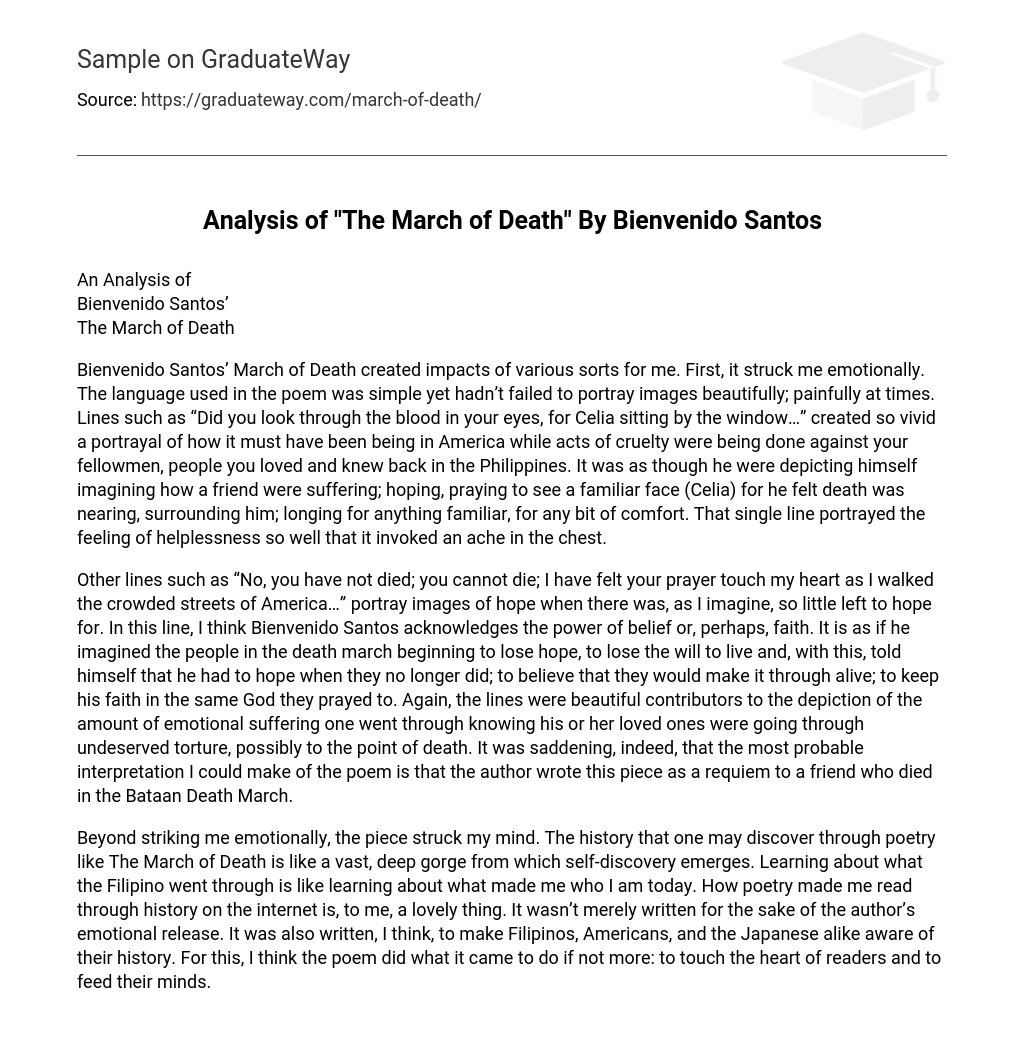An Analysis of
Bienvenido Santos’
The March of Death
Bienvenido Santos’ March of Death created impacts of various sorts for me. First, it struck me emotionally. The language used in the poem was simple yet hadn’t failed to portray images beautifully; painfully at times. Lines such as “Did you look through the blood in your eyes, for Celia sitting by the window…” created so vivid a portrayal of how it must have been being in America while acts of cruelty were being done against your fellowmen, people you loved and knew back in the Philippines. It was as though he were depicting himself imagining how a friend were suffering; hoping, praying to see a familiar face (Celia) for he felt death was nearing, surrounding him; longing for anything familiar, for any bit of comfort. That single line portrayed the feeling of helplessness so well that it invoked an ache in the chest.
Other lines such as “No, you have not died; you cannot die; I have felt your prayer touch my heart as I walked the crowded streets of America…” portray images of hope when there was, as I imagine, so little left to hope for. In this line, I think Bienvenido Santos acknowledges the power of belief or, perhaps, faith. It is as if he imagined the people in the death march beginning to lose hope, to lose the will to live and, with this, told himself that he had to hope when they no longer did; to believe that they would make it through alive; to keep his faith in the same God they prayed to. Again, the lines were beautiful contributors to the depiction of the amount of emotional suffering one went through knowing his or her loved ones were going through undeserved torture, possibly to the point of death. It was saddening, indeed, that the most probable interpretation I could make of the poem is that the author wrote this piece as a requiem to a friend who died in the Bataan Death March.
Beyond striking me emotionally, the piece struck my mind. The history that one may discover through poetry like The March of Death is like a vast, deep gorge from which self-discovery emerges. Learning about what the Filipino went through is like learning about what made me who I am today. How poetry made me read through history on the internet is, to me, a lovely thing. It wasn’t merely written for the sake of the author’s emotional release. It was also written, I think, to make Filipinos, Americans, and the Japanese alike aware of their history. For this, I think the poem did what it came to do if not more: to touch the heart of readers and to feed their minds.





